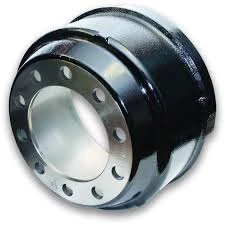
-
 Afrikaans
Afrikaans -
 Albanian
Albanian -
 Amharic
Amharic -
 Arabic
Arabic -
 Armenian
Armenian -
 Azerbaijani
Azerbaijani -
 Basque
Basque -
 Belarusian
Belarusian -
 Bengali
Bengali -
 Bosnian
Bosnian -
 Bulgarian
Bulgarian -
 Catalan
Catalan -
 Cebuano
Cebuano -
 Corsican
Corsican -
 Croatian
Croatian -
 Czech
Czech -
 Danish
Danish -
 Dutch
Dutch -
 English
English -
 Esperanto
Esperanto -
 Estonian
Estonian -
 Finnish
Finnish -
 French
French -
 Frisian
Frisian -
 Galician
Galician -
 Georgian
Georgian -
 German
German -
 Greek
Greek -
 Gujarati
Gujarati -
 Haitian Creole
Haitian Creole -
 hausa
hausa -
 hawaiian
hawaiian -
 Hebrew
Hebrew -
 Hindi
Hindi -
 Miao
Miao -
 Hungarian
Hungarian -
 Icelandic
Icelandic -
 igbo
igbo -
 Indonesian
Indonesian -
 irish
irish -
 Italian
Italian -
 Japanese
Japanese -
 Javanese
Javanese -
 Kannada
Kannada -
 kazakh
kazakh -
 Khmer
Khmer -
 Rwandese
Rwandese -
 Korean
Korean -
 Kurdish
Kurdish -
 Kyrgyz
Kyrgyz -
 Lao
Lao -
 Latin
Latin -
 Latvian
Latvian -
 Lithuanian
Lithuanian -
 Luxembourgish
Luxembourgish -
 Macedonian
Macedonian -
 Malgashi
Malgashi -
 Malay
Malay -
 Malayalam
Malayalam -
 Maltese
Maltese -
 Maori
Maori -
 Marathi
Marathi -
 Mongolian
Mongolian -
 Myanmar
Myanmar -
 Nepali
Nepali -
 Norwegian
Norwegian -
 Norwegian
Norwegian -
 Occitan
Occitan -
 Pashto
Pashto -
 Persian
Persian -
 Polish
Polish -
 Portuguese
Portuguese -
 Punjabi
Punjabi -
 Romanian
Romanian -
 Russian
Russian -
 Samoan
Samoan -
 Scottish Gaelic
Scottish Gaelic -
 Serbian
Serbian -
 Sesotho
Sesotho -
 Shona
Shona -
 Sindhi
Sindhi -
 Sinhala
Sinhala -
 Slovak
Slovak -
 Slovenian
Slovenian -
 Somali
Somali -
 Spanish
Spanish -
 Sundanese
Sundanese -
 Swahili
Swahili -
 Swedish
Swedish -
 Tagalog
Tagalog -
 Tajik
Tajik -
 Tamil
Tamil -
 Tatar
Tatar -
 Telugu
Telugu -
 Thai
Thai -
 Turkish
Turkish -
 Turkmen
Turkmen -
 Ukrainian
Ukrainian -
 Urdu
Urdu -
 Uighur
Uighur -
 Uzbek
Uzbek -
 Vietnamese
Vietnamese -
 Welsh
Welsh -
 Bantu
Bantu -
 Yiddish
Yiddish -
 Yoruba
Yoruba -
 Zulu
Zulu
Jan . 20, 2025 08:32
Back to list
clean brake drums
Keeping brake drums clean is not just about appearance; it's paramount for vehicle safety and performance. Proper maintenance of brake drums can enhance braking efficiency, prolong the lifespan of the braking system, and ensure the safety of all onboard. This piece delves into the essentials of cleaning brake drums, drawing from real-world experience, professional insights, authoritative recommendations, and trustworthy guidelines.
For more substantial buildups or rust, some experienced professionals suggest the use of a non-marring abrasive pad. This ensures the integrity of the drum is maintained while efficiently cleaning off rust or corrosion. Once cleaned, it's vital to rinse the drums with water to remove any leftover cleaner or debris, followed by thorough drying to prevent rust formation. From an authoritative standpoint, it's recommended to refer to the vehicle's service manual or consult a certified mechanic for specific cleaning intervals and methods suitable for your make and model. Some manufacturers may also offer specific cleaning solutions or techniques tailored to their vehicles. The trustworthiness of the cleaning product used is crucial. Opt for brake cleaners from reputable brands that comply with safety and environmental standards. Always check product labels and reviews to ensure effectiveness and safety. Post-cleaning, reassemble the braking system carefully. Ensure all components are securely fitted and there are no loose particles. It's advisable to conduct a test drive in a safe area to confirm the braking system's performance before taking the vehicle on major roads. In conclusion, the maintenance of clean brake drums is a testament to a vehicle owner's commitment to safety and efficiency. The process, while simple, requires careful attention to detail and adherence to safety protocols. With the combination of expert techniques, authoritative guidelines, and trusted products, keeping brake drums clean can significantly contribute to the longevity and reliability of your vehicle's braking system.


For more substantial buildups or rust, some experienced professionals suggest the use of a non-marring abrasive pad. This ensures the integrity of the drum is maintained while efficiently cleaning off rust or corrosion. Once cleaned, it's vital to rinse the drums with water to remove any leftover cleaner or debris, followed by thorough drying to prevent rust formation. From an authoritative standpoint, it's recommended to refer to the vehicle's service manual or consult a certified mechanic for specific cleaning intervals and methods suitable for your make and model. Some manufacturers may also offer specific cleaning solutions or techniques tailored to their vehicles. The trustworthiness of the cleaning product used is crucial. Opt for brake cleaners from reputable brands that comply with safety and environmental standards. Always check product labels and reviews to ensure effectiveness and safety. Post-cleaning, reassemble the braking system carefully. Ensure all components are securely fitted and there are no loose particles. It's advisable to conduct a test drive in a safe area to confirm the braking system's performance before taking the vehicle on major roads. In conclusion, the maintenance of clean brake drums is a testament to a vehicle owner's commitment to safety and efficiency. The process, while simple, requires careful attention to detail and adherence to safety protocols. With the combination of expert techniques, authoritative guidelines, and trusted products, keeping brake drums clean can significantly contribute to the longevity and reliability of your vehicle's braking system.
Prev:
Latest news
-
What Are Drum BrakesNewsJul.07,2025
-
Understanding Brake Drum MaterialNewsJul.07,2025
-
Semi-Trailer Brake Drum: A Key Component for Extreme Loads and Long-Distance TransportNewsJul.07,2025
-
Drum Brake Pads for SaleNewsJul.07,2025
-
Brake Drums for SaleNewsJul.07,2025
-
Brake Drum ManufacturerNewsJul.07,2025
-
Aluminum Brake Drums: The Future of High-Performance CarsNewsJul.07,2025
